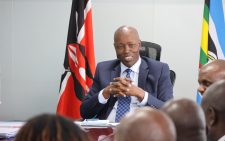Poor web accessibility fails people with disabilities

Evelyn Makena @evemake_g
For Wilson Macharia, an advocate of the High Court, filing the annual tax returns is a frustrating process.
He is computer savvy, but the digital accessibility of the Kenya Revenue Authority tax filing platform, Itax, is an obstacle for Wilson who is blind.
To access the platform users need to enter their KRA pin number and password.
With the help of a screen reader, a software that allows the visually impaired to read text displayed on a computer screen, Wilson is able to navigate these two stages.
To proceed with the process of filing the returns, users need to answer an arithmetic graphic displayed on the screen.
Since he cannot see and his screen reader cannot detect the graphic, Wilson is not able to proceed beyond this point.
Assistive technology
Since he got his KRA pin in 2013, Wilson relies on other people to file his returns at a cost and has been penalised twice for failing to file them.
In an era where most businesses and organisations have moved facilities online, it has become easier to access products and services remotely.
Yet, because of failure to integrate certain features in websites, people with disabilities are excluded.
Irene Mbari-Kirika, founder and executive director, inABLE says digital accessibility is important for people with disabilities (PWDs) as most services and various forms of communications are offered through applications or websites, moreso during this pandemic, which has shifted more services online.
She insists on need to boost accessibility on digital platforms to ensure PWDs are able to work, learn and socialise from wherever.
United Nations estimates 80 million people in Africa live with disabilities while 15 per cent of the global population has a form of disability.
“Any time one makes a website without access for people with disabilities, you are leaving out all these people,” she says.
inABLE, a non-profit organisation founded in 2009, helps the blind and visually impaired navigate internet by providing computer assistive technology such as screen readers.
Shadi Abou-Zara, accessibility strategy and technology specialist at World Accessibility Initiative (WAI), says websites designed to be inclusive have disability friendly features that ensure the same information available to other users is accessible to people with disabilities.
These features include accurate auto translation and sign language provision for people with auditory disabilities.
Other features are clear colour contrast for people with learning disabilities such as dyslexia and accurate speech recognition, availability of podcasts and enhanced search engine optimisation for the blind and visually impaired.
“There is an internationally recognised standard called the web content accessibility guidelines.
It outlines criteria of what accessibility means, including providing captions, sufficient colour contrast, giving text alternatives for images aund voice input,” says Shadi.
The standards produced by WAI, a body that makes international guidelines to define accessibility for websites and boost inclusion for PWDs, are adopted by many governments globally.
Digital inclusion
For Shadi, who is quadriplegic (affected by paralysis in all four limbs), technology makes accessing services easier.
“I was 16 when I became quadriplegic, so I have limited use of my arms. It is through digital technology I was able to finish my formal education and its one of the reasons I got into digital accessibility and realised what a big diference it makes,” he says.
While web accessibly brings services closer it can lock out some people with disabilities and bring about what Wilson terms as a second wave of exclusion.
“For a long time when PWDs complained about the lack of access to physical infrastructure the answer has been to shift services online.
Lack of web accessibility becomes a second wave of exclusion,” says Wilson.
Shadi notes that making a website accessible does not only ensure digital inclusion for people with disability but also improves usability for all users.
Making a website accessible widens a business or organisation’s reach, improves search engine optimisation and increases the number of people visiting a site ultimately boosting its visibility.












